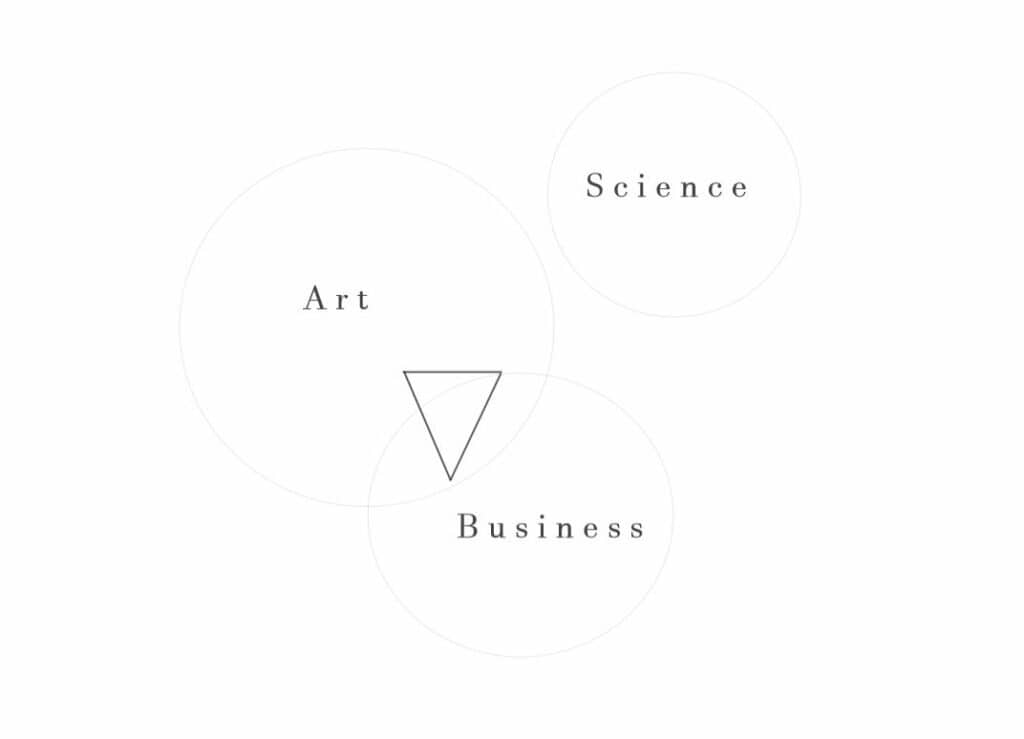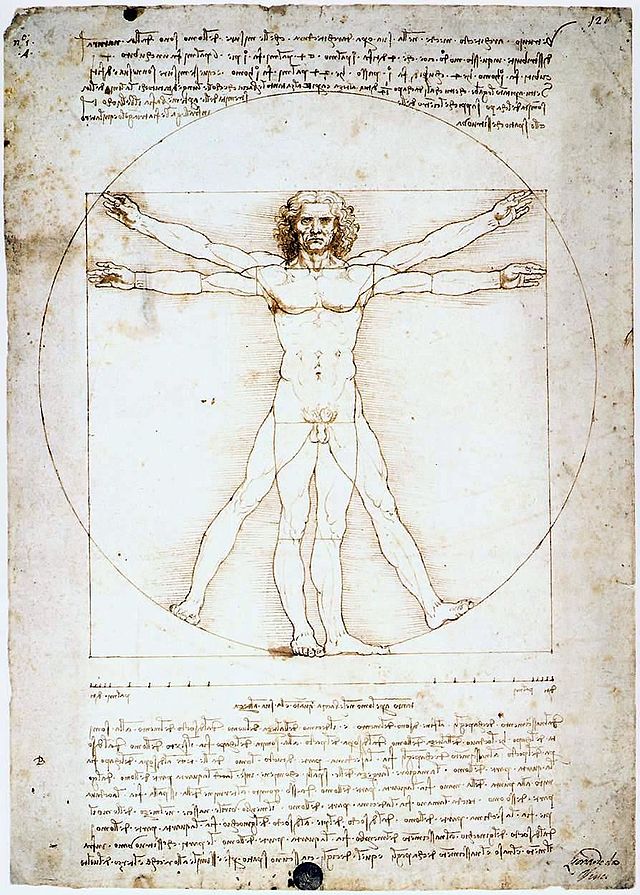The Vitruvian Man: With Fresh Eyes

‘The Vitruvian Man of Leonardo da Vinci as a model of innovative entrepreneurship at the intersection of business, art and technology’ is shown in the first image. This is a ‘modern’ interpretation of the Renaissance drawing as a business model as published in the Journal of Innovation and Entrepreneurship in 2017. An ‘entrepreneurial innovation’, where business intersects art, intersects technology. The pioneering drawing, made by Leonardo da Vinci towards the end of the fifteenth century in an attempt to resolve the position of the human body’s harmonious proportions in relation to the physical world, has now been reduced and neatly condensed down to a business model, a medium for making money, creating and ensuring profit.
But who am I to ridicule or even condemn this perception of the iconic drawing?
The Vitruvian Man has been reproduced countless times and has been strewn across Italian streets for as long as I can remember. The image of the drawing is possibly in the possession of every tourist who has passed through, and lies waiting for those who will wander through in the future. Does this magnitude diminish the value of the original drawing? Ebb its origins? Or does it emphasise its iconic essence? The image of the drawing now exists innumerably, long after its creator, and will continue to be produced and pushed into our minds. But what is our perception of this drawing in our world? A world with mass production and the internet. Images of the drawing can be purchased and placed onto our fridge doors, we see the image when we reach for a drop of milk to add to a cup of tea. In understanding our current world; driven by constant progression and increasing profits, where everything is so easily accessible and readily available, perhaps the business model is a logical perception of the drawing after all? The original drawing itself is rarely exhibited as it is too fragile, too aged and delicate to be displayed, quite literally, in the light of today. Does this confirm its current physical position as one of partial irrelevance? Or perhaps it is just a reality pertaining to the passage of time and the sensitivity of a material.

Stephen Jay Gould once described Leonardo da Vinci as a spaceman. The second image shows the adaptation of the Vitruvian Man drawing by NASA as an image stitched to the sleeve of their space suits. A curious coincidence, yet a different perception of the Renaissance drawing is demonstrated six centuries on from when it was first created. In a world where the human body has traversed the surface of the moon, where the physical world no longer bounds it.
If we consider the time before the Vitruvian Man, when Leonardo da Vinci first laid eyes on the initial iteration of his infamous drawing, the work by the Roman architect Vitruvius. Da Vinci’s perception of the work challenged two of the main principles introduced by Vitruvius; the human proportions and the concentricity of the circle and the square, as shown in the third image.

In his drawing, unlike the man in the circle, the man in the square has markings on the wrists, arms, hands, knees, pubis, shoulders and along the chest. These markings refer to the proportions of the human body represented and explained by da Vinci as increments; where each part is a fraction of another part. The visible world is present in the square, to which the divisible, mechanical point belongs, occurring at the pubis. The circle however, symbolises the world of truth, to which the indivisible, mathematical central point belongs, occurring at the navel. Implicit in the passage of time or in the progression of evolution is the development of knowledge and thinking and the advancement of societies and cultures which may have caused the shift in da Vinci’s perception of the ancient text.
‘All great science, indeed all fruitful thinking, must occur in a social and intellectual context and contexts are just as likely to promote insight as to constrain thought’
– Stephen Jay Gould, Leonardo’s Mountain of Clams And The Diet of Worms, 1988.
Just as Leonardo da Vinci’s perception of Vitruvius’ work differed from the original, our perception of The Vitruvian Man has shifted.
Is it essential for the observer to experience the relevant social and intellectual context in which the drawing is created, in order to completely comprehend it? Is a drawing only relevant to the observer if they encounter it on the very day that it was drawn?
‘Wisdom is the daughter of experience’
‘pure and simple experience, who is the one true mistress’
– Leonardo da Vinci
Are the perceptions we have directly related to the social and intellectual contexts we find ourselves in at the time of observation? And therefore will our perception of The Vitruvian Man be ever-changing depending on the time period of the observation?
Is each interpretation of this iconic drawing, limitless, boundless? Or perhaps bounded by the social and intellectual context at the time of interpretation?
Is this why we perceive The Vitruvian Man in the manner in which we do today? As a symbol stitched to the sleeve of the NASA space suits, a symbol that has penetrated through the atmosphere and returned, or even the perception of the Renaissance drawing as a successful business model. Through evolution our knowledge and our thinking progresses and with that our societies and cultures shift and advance. We have since discovered technology inconceivable to a human being at the time of the fifteenth century. Inconceivable, not due to a lack of ability, skill, intuition or curiosity, as Leonardo da Vinci has demonstrated in abundance, but perhaps the social and intellectual context of the time, would not have allowed for the interpretation of such works. It is this advancement implicit in the passage of time that has changed what we see when we look at works from the past and how we interpret them, including the drawing of The Vitruvian Man.
Niamh Murphy is a graduate of Architecture from the University of Limerick and is currently based in London.
This text was entered into the 2020 Drawing Matter Writing Prize. Click here to read the winning texts and more writing that was particularly enjoyed by the prize judges.
